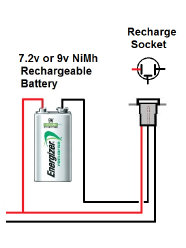(https://largescalecentral.com/externals/tinymce/plugins/emoticons/img/smiley-surprised.gif)While we’re talking grades I want to remind the world that locomotive pulling ability declines FAST on inclines.
Examples, though steam would be illustrative of steel wheel on steel rail characteristics in general:
(as much as I love the little internal combustion, and electric, industrial critters I don’t have any performance references for them)
According to data on page 94 of a reprint of a Baldwin steam locomotive catalog, a standard gauge 2-8-2 of 160 tons weight in working order with 63 inch drivers, can haul 6080 tons “of cars and lading” on the level; 920 tons on a 2% grade; and 275 tons on a 5% grade.
and
from book H. K. Porter Light Locomotives
Heavy steel works 4 wheel connected saddle tank locomotive, an 0-4-0ST, their largest one of 50.5 tons weight in working order, with 20,435lbs tractive effort; can haul 3090 tons on the level; 720 tons on a 1% grade; and 235 tons on a 3% grade.
And somewhere on the bookshelf over there is a Milwaukee Road electrified territory book from Morning Sun where one picture caption of a location where NP paralleled MILW mentions the shown NP Z-something class 2-8-8-something articulated/Mallet in the background was rated to haul only 600 tons on the 4% grade at that location.
It is also known and written about that model locomotives of most all scales normally have proportionally less hauling ability on the level and greater hauling ability on grades than does the real deal.
And with that I’m out of intelligent things to say and am getting signals that my tummy would like some dinner.


